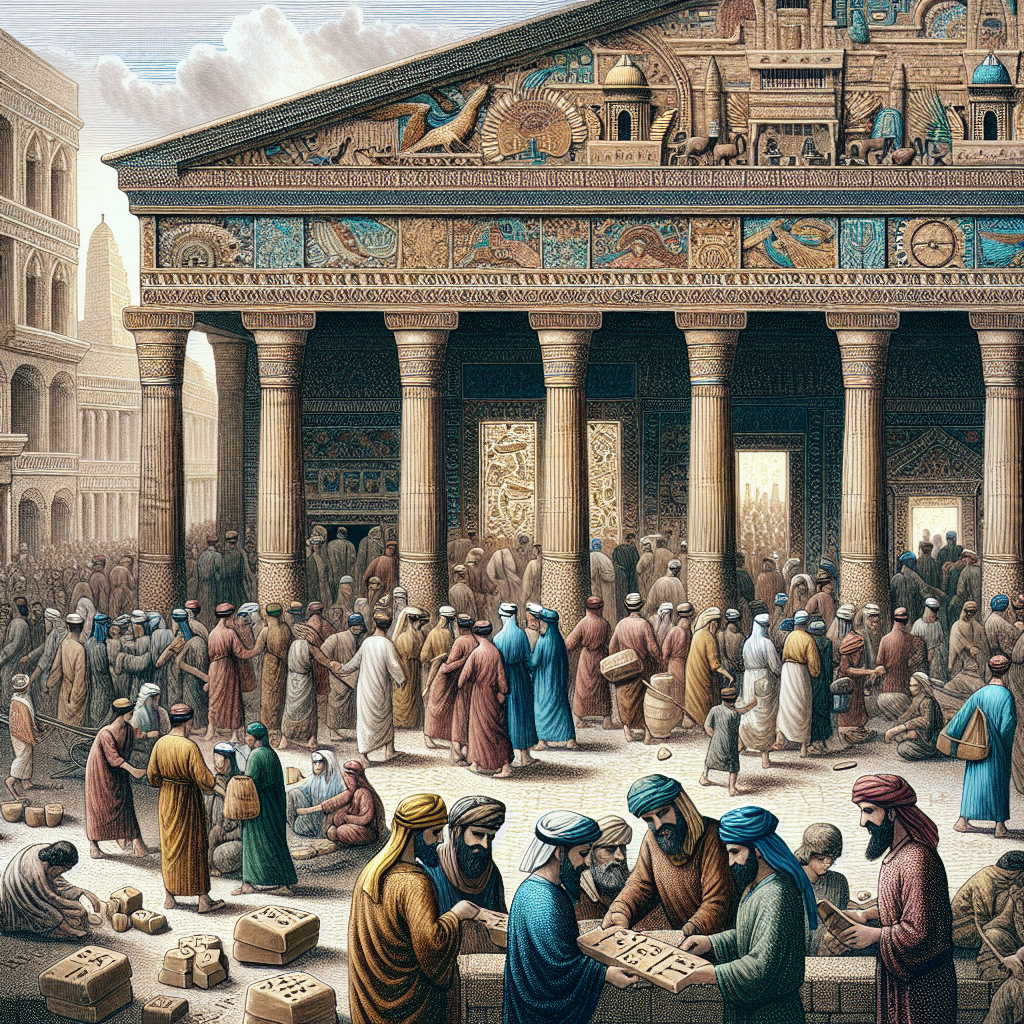Fascinating Facts about the First Banks: Tales from Ancient Mesopotamia
Ah, money! Some people cringe at the sight of their bank account balance, while others eagerly await that ping of a deposit. But have you ever wondered where it all began? The concept of banking is older than you might think. Let’s travel back through time to Ancient Mesopotamia, the land between the Tigris and Euphrates rivers, where the seeds of modern banking were first planted.
The Birthplace of Banking
Did you know that Mesopotamia, often called the “Cradle of Civilization,” is also the cradle of banking? It’s true! Thousands of years before the invention of paper money, the clever Mesopotamians developed a system that laid the groundwork for our modern-day financial institutions. Here’s how it all started.
Cunning Clay Tablets
Forget online banking or paper checks; back in the day, Mesopotamians used clay tablets! You heard that right. Around 2000 BCE, financial transactions were recorded on these handy slabs of baked mud. These tablets not only documented commercial transactions but also kept track of loans, interest rates, and deposits. You can think of them as the ancient spreadsheets of their time.
The Temples: Ancient Riverbank Branches
Who needs bank buildings when you’ve got temples? In Mesopotamia, temples served multiple purposes, one of which was to act as an early form of a bank. These sacred sites accepted deposits of grain, livestock, and precious metals. They even issued loans and took care of storing valuable items!
- Deposits: People would deposit goods like grain, livestock, or metals for safe-keeping.
- Loans: Temples provided loans, often for agricultural needs or to fund trade expeditions.
- Storage: Temples securely stored valuable items, akin to modern safety deposit boxes.
Interest That’ll Interest You!
In case you’re wondering, yes, those clever Mesopotamians also charged interest on loans. The average interest rate was around 20%, a number that might make even today’s credit card companies blush! Interestingly, these interest rates were documented meticulously on—you guessed it—clay tablets.
The Rise of the Entrepreneur
Mesopotamia wasn’t just about temple banking. Private individuals, known as “tamkarum,” were also in the business of lending money and keeping deposits. These early entrepreneurs were savvy traders and businessmen who contributed to a robust economy. Essentially, they were the world’s first private bankers.
A Legal Framework Ahead of Its Time
The banking system in Mesopotamia was not without rules. The famous Code of Hammurabi, dating back to around 1750 BCE, included several laws concerning banking activities. These laws helped to regulate interest rates and ensure fair play. Imagine trying to argue your case—a dispute over a loan—before a judge without the luxury of a lawyer or a courtroom drama show to reference!
Conclusion: Ancient Wisdom in Modern Times
Who would’ve thought that our modern day banking system traces its roots back to the ancient clay tablets and temples of Mesopotamia? As we swipe our cards, tap our phones, or even make a trip to the ATM, it’s fascinating to consider that these conveniences are echoes of innovations from thousands of years ago.
So, the next time you look at your bank statement or cringe at that credit card interest rate, remember to give a nod to the ancient Mesopotamians—the original financial wizards. They may not have had the luxury of online banking, but their innovative spirit continues to impact our lives today.
Are you eager to learn more historical fun facts? Stay tuned for more delightful dives into the past, and remember: history is wealth waiting to be discovered!
